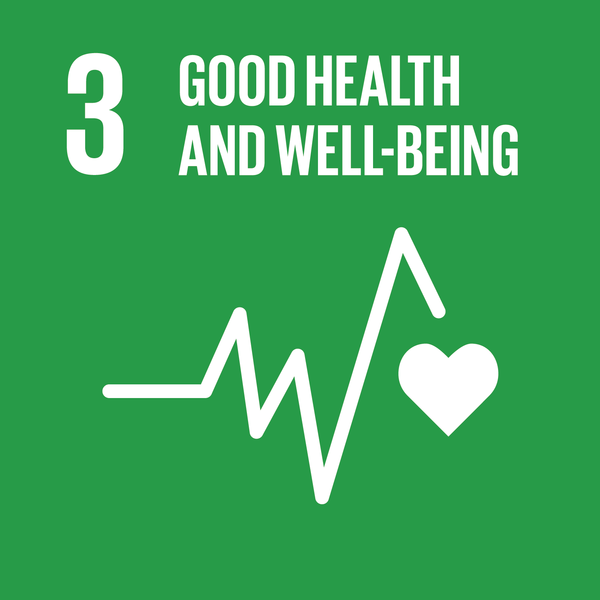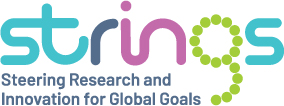– Valeria Arza and Agustina Colonna
Research Center for Transformation (CENIT), Economics and Business School, National University of San Martin
6 May 2020
The global coronavirus pandemic has brought about many changes throughout the world in only a matter of weeks. Humanity is facing a problem without precedent; the final effects are yet uncertain and most of us have been forced to drastically change our routines and behaviors in a way we have never imagined. Big challenges often boost creativity and promote important transformations in society, and this has been the case with the coronavirus crisis. Note for instance the many solidarity initiatives ranging from fund-raising schemes and food banks, to volunteers assisting individuals in high-risk groups, together with several citizen-led resources that have been created or adapted to help find our way through the pandemic (EU Citizen Science 2020). Another relevant example has been the drastic change in many information markets, where thousands of resources such as books, museum exhibitions and movies have been temporarily opened for the community free of cost.
For science, the particular challenge posed by this situation is immense, as the spread of coronavirus has created urgent and life-threatening problems. Solutions must then be fast, while the need persists to respect health protocols in order to minimize risks. Given the global extent of the situation, any health outcome must also be affordable to reach all communities regardless of their economic status. In this context, open science practices have suddenly emerged as a promising path to cope with such a challenge.
This process started in mid-January 2020 with the placement of the DNA sequence of the SARS-Cov- 2[1] by Fudan University in Shanghai in an open-access data repository (EOSC 2020). This information is extremely useful for the development of diagnosis methods and drugs against the virus and has allowed scientists all over the world to start working in this direction (Johnson 2020). This first step was followed by an enormous number of initiatives providing open access to information to help combat COVID-19 such as the EU COVID 19 Data Platform and the COVID-19 section of the New England Journal of Medicine. Scientists around the world are sharing the real-time progress and results of their research with the global academic and overall community (Kubota 2020). In addition, scientists are avoiding the long delays in journal publishing through the publication of pre-prints (Kubota 2020) and scientific publishers have made articles and studies on coronaviruses free to access. Wiley, Springer Nature and Elsevier have all temporarily dropped their paywalls and signed onto the Wellcome Trust’s pledge to share research data and findings relevant to COVID-19 (EOSC 2020). Another huge effort in this opening process has been the Open COVID Pledge where participants agree to make all of their patents freely available to the public for use in the fight against COVID-19. This initiative counts with the participation of leading digital companies such as Amazon, Facebook, Hewlett Packard Enterprise, IBM and Microsoft.
Thus, in the face of the challenges created by the global health crisis, the scientific community has reacted rapidly and creatively by increasing collaboration and open access to data and research outcomes (Fressoli 2020). The increase in the flow of knowledge has allowed for science around COVID-19 to progress at incredible speed and scientists are already working on a vaccine for the virus, which is expected to start being tested on humans in 3 months (a historical record) (Johnson 2020).
As a result, open science is gaining momentum. Governments, international organizations and private stakeholders (see article by Fortune magazine, Gold 2020) have called for more open and collaborative ways of producing science, claiming that they are more efficient, reliable and can produce solutions more affordably to promote access by many. UNESCO for instance, recently called on governments to promote scientific cooperation and open science in their countries through the pooling of knowledge among countries, provision of free access to data and research findings, reinforcement of links between the scientific and political community and the opening of science to society (UNESCO 2020).

The emergence of open science practices in a health-related area and at such a global scale is quite a novel event. So far, open science projects in this area have been mostly dedicated to seeking solutions for diseases with non-profitable markets[2], such as Malaria, which are financially supported by philanthropic or public organizations. Most milestones in open science have been observed in the milieus of basic research, where science is perceived as a public good with few practical applications to be sold in markets. This is the case for instance of the Human Genome Project, which was developed thirty years ago and involved the participation of twenty organizations around the world committed to deciphering the human genetic map and sharing it openly. The present case of COVID-19 is quite different, as the scientific discoveries are much closer to applicable solutions and hold an immense potential demand (and economic profitability). However, it is not entirely surprising that open science has emerged in this context for several reasons.
Firstly, open science boosts efficiency by avoiding duplication, promoting collective intelligence mechanisms (Nielsen 2011) and creating positive externalities (David 2005). Openly available data and research outcomes also prevent or reduce the effect of defensive strategies based on intellectual property rights (IPR) mechanisms that slow down or impede urgently needed solutions. While in a normal situation there are few economic incentives to open up highly profitable health-related research[3], the pandemic context may have led to international pressures to prioritize efficiency over private profitability. Thus, open science becomes a promising path to deal with this urgency.
Secondly, the process of opening science is not starting from scratch. The scientific community has already gained experiences and developed capabilities, infrastructure, and instruments to enhance the economic benefits of open science which can be useful to apply in the current situation. For example, the Human Genome Project and its more recent development of the Structural Genoma Consortium are providing evidence about the economic benefits associated to openness (Simon Tripp and Grueber 2011). There have also been multiple experiments on open source health-related business models (M4K Pharma 2020) as well as other open source drug development projects for neglected diseases which provide concrete evidence on breakthroughs and opportunities created by open science (OSM; TSL; Spangenberg et al. 2013; Veale 2019).
In sum, the pandemic is shaking structures and forcing us to rethink the status quo. In the scientific field, traditional research methods are being questioned not only by external actors claiming greater commitment to society, but also within the research community. A recent article in the American Economic Review argues that research productivity is falling (Bloom et al. 2020). [4] This is particularly present in pharmaceutical research where the therapeutic value of new drugs is marginal and the productivity of R&D in medicine is shrinking (Scannell et al. 2012). This has been associated with the expansion of patents that, far from promoting, hinders the generation of new ideas by occluding the collective knowledge previously generated. Let us hope that the movements produced by this extraordinary situation allow the scientific and political community to see the opportunities that open science pathways create. We need open science practices to be sustained after the pandemic ends as it may be the way to improve the impact that science, technology and innovation have on the numerous challenges faced by humanity.
Footnotes
[1] The virus strain that causes coronavirus disease 2019
[2] Where the populations suffering the disease tend to be poor and the cure/treatment for the disease does not have a potential market with high purchasing power
[3] Competition and secrecy, rather than collaboration and openness, define both market success and the opportunity to obtain exclusive rights through intellectual property.
[4] Medida como crecimiento de la productividad total de factores por investigador
References
Bloom, Nicholas, Charles I. Jones, John Van Reenen, and Michael Webb. 2020. “Are Ideas Getting Harder to Find?” American Economic Review 110 (4): 1104–44. https://doi.org/10.1257/aer.20180338.
David, Paul. 2005. “The Economic Logic of ‘Open Science’ and the Balance between Private Property Rights and the Public Domain in Scientific Data And,” March.
EOSC. 2020. “Open Science Spreads in Search for COVID 19 Vaccine,” March 23, 2020. https://www.eoscsecretariat.eu/news-opinion/open-science-covid-19-vaccine.
EU Citizen Science. 2020. “Citizen Science Resources Related to the COVID19 Pandemic.” EU Citizen Science. March 31, 2020. https://eu-citizen.science/citizen-science-resources-related-covid19-pandemic/.
Fressoli, Mariano. 2020. “¿Qué Ciencia Necesitamos Para Enfrentar El Coronavirus?,” January 4, 2020. http://elplanc.net/que-ciencia-necesitamos-para-enfrentar-el-coronavirus/.
Gold, Richard. 2020. “The Coronavirus Pandemic Has Shattered the Status Quo on Drug Development. We Should Build on That.” March 26, 2020. https://fortune.com/2020/03/26/coronavirus-vaccine-drug-development-open-science-covid-19-treatment/.
Johnson, Carolyn. 2020. “Scientists Are Unraveling the Chinese Coronavirus with Unprecedented Speed and Openness,” January 24, 2020. https://www.washingtonpost.com/science/2020/01/24/scientists-are-unraveling-chinese-coronavirus-with-unprecedented-speed-openness/.
Kubota, Taylor. 2020. “Stanford Researchers Discuss the Benefits – and Perils – of Science without Peer Review,” June 4, 2020. https://news.stanford.edu/2020/04/06/open-science-era-covid-19/.
“M4K Pharma. Open Science for Children’s Health.” 2020. 2020.
Nielsen, Michael. 2011. Reinventing Discovery: The New Era of Networked Science. Princeton University Press.
Scannell, Jack W., Alex Blanckley, Helen Boldon, and Brian Warrington. 2012. “Diagnosing the Decline in Pharmaceutical R&D Efficiency.” Nature Reviews Drug Discovery 11 (3): 191–200. https://doi.org/10.1038/nrd3681.
Simon Tripp, and Martin Grueber. 2011. “The Economic Impact of the Human Genome Project.” Batelle Memorial Institute.
Spangenberg, Thomas, Jeremy N. Burrows, Paul Kowalczyk, Simon McDonald, Timothy N. C. Wells, and Paul Willis. 2013. “The Open Access Malaria Box: A Drug Discovery Catalyst for Neglected Diseases.” Edited by Bruce Russell. PLoS ONE 8 (6): e62906. https://doi.org/10.1371/journal.pone.0062906.
Todd, Matthew. n.d. “OSM. Open Source Malaria.” http://opensourcemalaria.org/.
———. n.d. “The Synaptic Leap Open Source Biomedical Research.” http://www.thesynapticleap.org/.
“UNESCO Mobilizes 122 Countries to Promote Open Science and Reinforced Cooperation in the Face of COVID-19.” 2020, March 30, 2020. https://en.unesco.org/news/unesco-mobilizes-122-countries-promote-open-science-and-reinforced-cooperation-face-covid-19.
Veale, Clinton G. L. 2019. “Unpacking the Pathogen Box—An Open Source Tool for Fighting Neglected Tropical Disease.” ChemMedChem 14 (4): 386–453. https://doi.org/10.1002/cmdc.201800755.

Leave A Comment